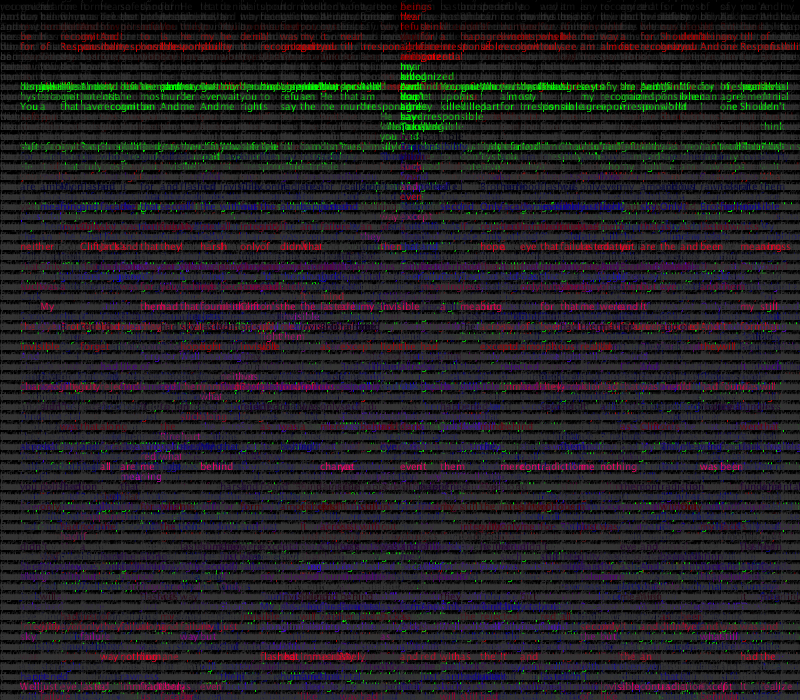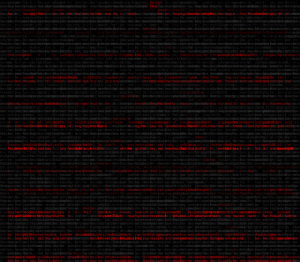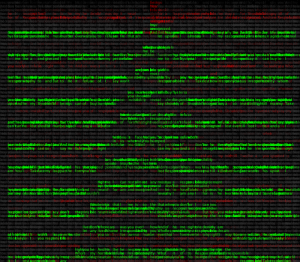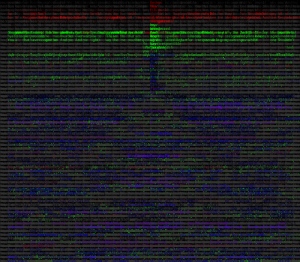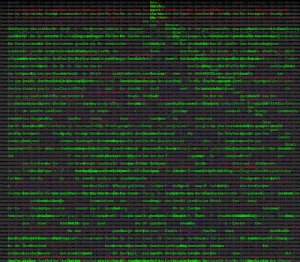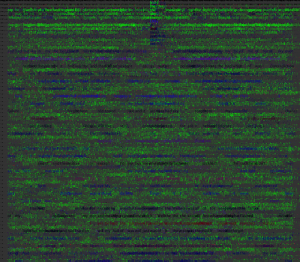For my final system I built off of our cellular automata code, replacing the squares with text. I also put a transparent black background so new iterations would only compile over old as opposed to completely replacing. Pictured above is the code after around a minute. The way it works is all the boxes that would typically be white or the color of the background are now grey and opaque, while the shaded in boxes determined by one of the simple rules of cellular automata randomly choose colors from a set and words from an array.
These arrays are created from passages from the book Invisible Man by Ralph Ellison, which tells a surreal narrative about an African-American man and how his race renders him invisible throughout various events. This book is perhaps one of my favorites, but my selection of the book came with the images and colors it evoked. Firstly the main part of this automata and the system integrated is the balance of the words as unimportant and relevant. The piece I believe can stand simple as a visual without the words being read, representing a feeling of invisibility. Whereas some words and phrases can easily be read due to the way I align the text and have colors shift, reflecting the strong moral and identity questions that the novel brings up. But before I discuss that use of the novel, I must discuss the components of the system that differentiate it from a simple cellular automata.
First, text of varying lengths falls in less of an organized pattern than the squares usually used in cellular automata. I also edited some of the rulesets of the cellular automata so I would have less proliferations that covered the whole screen, allowing for most run-throughs of this sketch to start as below, with one word coming to the forefront in red. And slowly the words would cover the whole screen. In the third image below the cellular automata shifts one row down, which allows for the text to not infinitely cover itself.
After around a thousand frames, the color shifts from red to either green or purple/pink, and changes the array to another passage. I have selected three passages that have meaning to me and to the book and split them up into three arrays. Below is the progressing of the system as it shifts arrays and colors.
One of the main differences of this system from my previous two is that it can evolve continuously as it exists. After being run from 30+ minutes the below two frames resulted.
